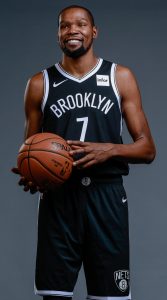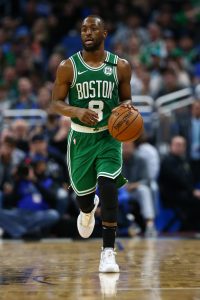The mid-level exception is the most common way for over-the-cap NBA teams to sign free agents from other clubs for more than the minimum salary. It ensures that each team heads into the offseason with a little spending flexibility, even if that franchise is deep into luxury-tax territory.
Each team is eligible to use a specific type of mid-level exception depending on its proximity to the salary cap. The most lucrative form of mid-level is available to teams that are over the cap but below the tax apron. Still, clubs deep into the tax, and even those under the cap, have access to lesser versions of the MLE. Here’s a breakdown of how all three forms of the exception are structured:
For over-the-cap teams:
- Commonly called either the full mid-level exception, the non-taxpayer’s mid-level exception or simply the mid-level exception.
- Contract can cover up to four seasons.
- First-year salary is worth $9,258,000 in 2019/20.
- Once used, the team cannot surpass the “tax apron” (approximately $6MM+ above tax line) for the remainder of the season.
For teams above the cap and the tax apron:
- Commonly called the taxpayer’s mid-level exception.
- Contract can cover up to three seasons.
- First-year salary is worth $5,718,000 in 2019/20.
For teams with cap room:
- Commonly called the room exception.
- Contract can cover no more than two seasons.
- First-year salary is worth $4,767,000 in 2019/20.
Each form of the mid-level allows for annual raises of up to 5% of the value of the first season’s salary. Last offseason, we broke down the maximum total salaries that players signed using the mid-level exception in ’19/20 could earn. Those numbers can be found right here.
 While teams can use their entire mid-level exception to sign one player, as the Magic did this season with Al-Farouq Aminu, clubs are also allowed to split the mid-level among multiple players, and that’s a common course of action. For instance, the Raptors have used their MLE to complete four separate signings, devoting parts of it to Patrick McCaw, Rondae Hollis-Jefferson, Matt Thomas, and Dewan Hernandez)
While teams can use their entire mid-level exception to sign one player, as the Magic did this season with Al-Farouq Aminu, clubs are also allowed to split the mid-level among multiple players, and that’s a common course of action. For instance, the Raptors have used their MLE to complete four separate signings, devoting parts of it to Patrick McCaw, Rondae Hollis-Jefferson, Matt Thomas, and Dewan Hernandez)
Players drafted in the second round often sign contracts for part of the mid-level because it allows teams to give them contracts for more years and more money than the minimum salary exception provides. For example, the Mavericks used their mid-level to sign Isaiah Roby to a four-year contract that starts at $1,500,000.
Without the MLE, the Mavs would have been limited to a two-year deal starting at $898,310 for Roby, who was later traded to Oklahoma City. Plus, if Roby plays out his full four-year contract, he’ll have full Bird rights rather than just the Early Bird rights he’d have following a two-year deal.
Some front offices prefer to leave all or part of their mid-level exception unused in the offseason so it’s still available near the end of the regular season. At that point, a contender could use its MLE to try to sign an impact veteran on the buyout market.
A non-contending club, on the other hand, could use its MLE to lock up an intriguing developmental player to a long-term contract, like the Heat did at the end of the 2018/19 campaign with Duncan Robinson and Kendrick Nunn. Both players, who signed in the season’s final week, would be restricted free agents in 2020 if Miami had used the minimum salary exception to sign them to two-year contracts instead of using the MLE to negotiate three-year deals.
Unlike the bi-annual exception, the mid-level exception can be used every season. So whether or not a team has used its mid-level in 2019/20, each club will have the opportunity to use some form of the MLE when the 2020/21 league year begins.
Under the old Collective Bargaining Agreement, the mid-level exception increased annually at a modest, fixed rate. However, under the current CBA, the mid-level increases – or decreases – at the same rate as the salary cap, ensuring that its value relative to cap room remains about the same from year to year. We estimated 2020/21’s MLE figures in February, based on the NBA’s $115MM salary cap projection, but that projection is now very much up in the air due to the coronavirus pandemic.
Note: This is a Hoops Rumors Glossary entry. Our glossary posts will explain specific rules relating to trades, free agency, or other aspects of the NBA’s Collective Bargaining Agreement. Larry Coon’s Salary Cap FAQ and the Basketball Insiders salary pages were used in the creation of this post.
Earlier versions of this post were published in previous years by Luke Adams and Chuck Myron. Photo courtesy of USA Today Sports Images.





 While teams can use their entire mid-level exception to sign one player, as the Magic did this season with
While teams can use their entire mid-level exception to sign one player, as the Magic did this season with 